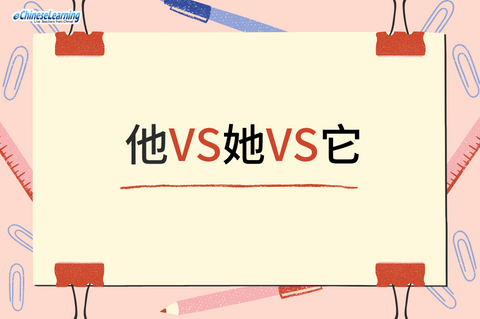Some say Chinese is the most difficult language to learn, while others think the opposite, as in Chinese, all gender pronouns are generally called “tā”, while in some languages like German, there are at least nine.
In this article, we’ll introduce you to gender pronouns in Chinese. Here are some sentences for you to better learn them.

1. Tā shì dà wèi.
他 是 大 卫。
He is David.
Tā (他): It’s mostly used in place of “he”. But it’s somewhat of a gender-neutral pronoun, too. It can be used when the gender of a person is unknown or unclear. Here is an example:
Nǐ shuō de zhè gè rén, tā shì shuí?
你 说 的 这 个 人,他 是 谁?
This person you’re talking about, who is he/she?

2. Tā zhù zài zhōng guó.
她 住 在 中 国。
She lives in China.
Tā (她): The female form, equivalent to “she” in English.

3. Tā shì yī zhī māo.
它 是 一 只 猫。
It is a cat.
Tā (它): Equivalent to “it”. It usually refers to animals or objects.

In fact, the only one gender pronoun used in ancient China was tā (他). Later as the language evolved, the pronoun has become three different characters: 他, 她, and 它, but the pronunciations for them are still totally the same: tā.

Choose the right word to fill in the blank.
A. tā (他) B. tā (它) C. tā (她)
1. Tā shì mǎ lì.
__ 是 玛 丽
She is Mary.
2. Tā zhù zài měi guó.
__ 住 在 美 国
He lives in America.
3. Tā shì yī zhī gǒu
__ 是 一 只 狗。
It is a dog.
You May Want to Learn More :
“How to Use “de” – “的”, “地”and “得” in Chinese Correctly?”
“Do you know the differences between 不 (bù) and 没 (méi)?”
”Yì si (意思)-Most Misunderstood Word with So Many Surprising Meanings”




